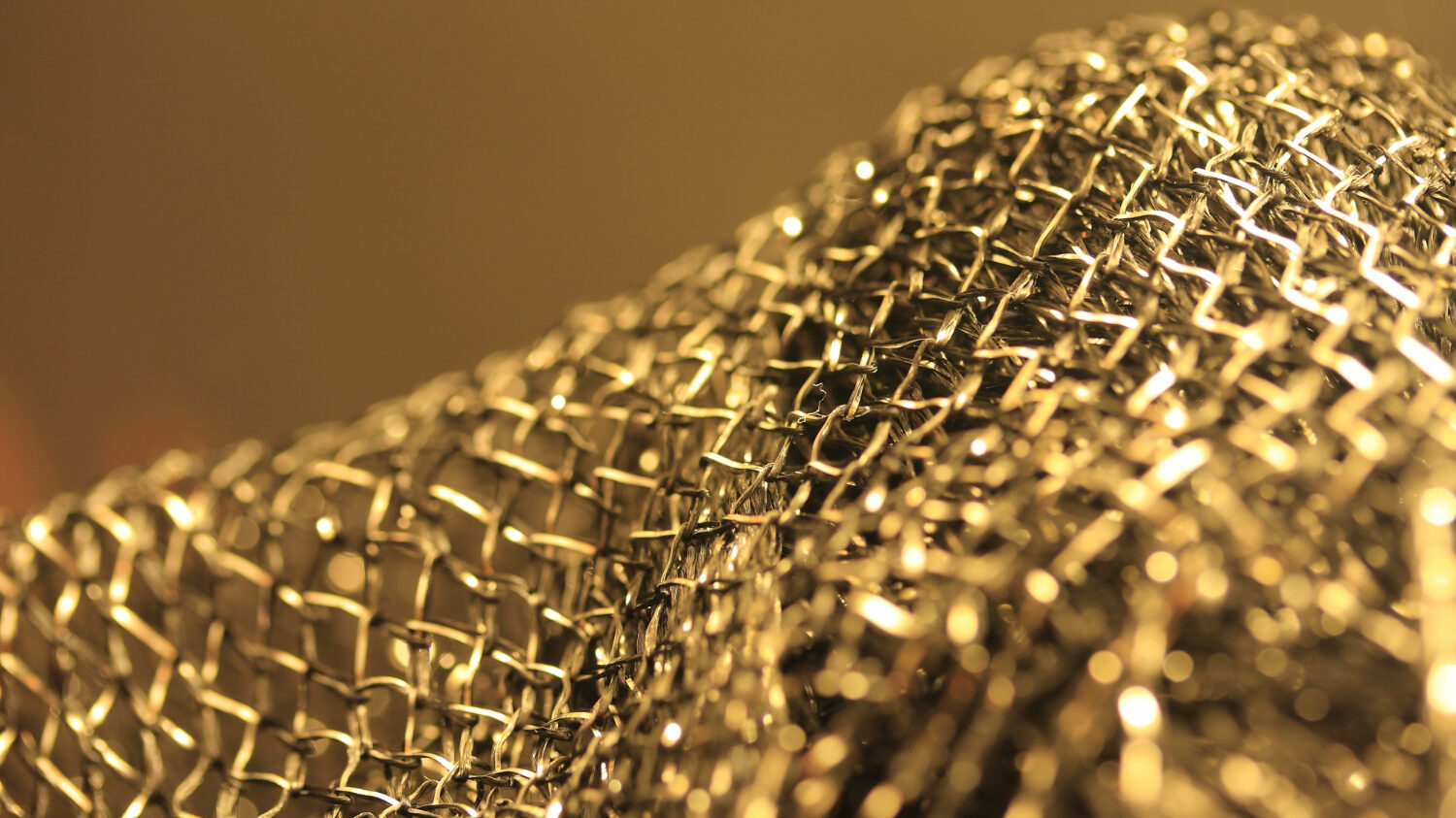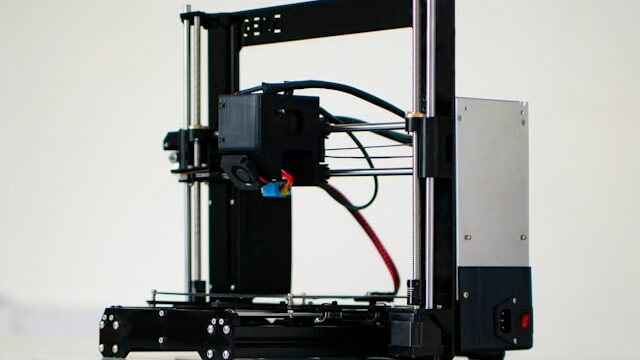Do you have some questions about 3D printing in gold? At Imprimy, we are here to provide all the answers you’re looking for.
3D printing in gold represents a revolution in the luxury industry, enabling advanced innovation through customized designs and unmatched precision.

What is 3D printing in gold?
3D printing in gold is an additive manufacturing process that uses gold powder or gold-based alloys to create high-precision objects by layering successive layers to form customized jewelry, accessories, or luxury items.
Definition of 3D printing in metal
3D printing in metal, also known as metal additive manufacturing, is an advanced manufacturing process that creates metal objects by adding material layer by layer from a 3D digital model. Unlike traditional subtractive manufacturing methods, this process uses metal powders or molten metal wires, melted with energy sources such as laser or electron beams.
It allows for the production of parts with complex geometries, often impossible to achieve with conventional techniques, while reducing material waste and optimizing the mechanical performance of components. This technology is particularly valued in sectors such as aerospace, medical, and automotive for the production of customized, lightweight, and durable parts.
The Specificities of Gold as a 3D Printing Material
Gold has several unique characteristics as a 3D printing material, making it a valuable but also demanding choice. First, gold is a noble metal, highly resistant to corrosion and oxidation, ensuring excellent durability of the manufactured parts. Its ductility and malleability allow for great detail precision, making it ideal for applications such as luxury jewelry.
However, gold is an expensive material, requiring rigorous material management, often in the form of fine powder in processes like selective laser melting (SLM) or indirect sintering. Moreover, its specific thermal properties, particularly its high conductivity, require advanced technical expertise to ensure uniform melting and avoid defects.
What are the applications of 3D printing in gold?
3D printing in gold is used in jewelry and high-end watchmaking
3D printing in gold plays an increasingly important role in the fields of jewelry and high-end watchmaking, revolutionizing traditional design and manufacturing methods. This technology allows for the creation of complex pieces, with fine details and customized shapes, that would be difficult, if not impossible, to achieve with traditional techniques like lost wax casting.
In jewelry, it promotes rapid customization, reduces waste of precious materials, and accelerates production cycles. In high-end watchmaking, 3D printing in gold is used to manufacture both decorative and functional components with precise tolerances, integrating both aesthetic innovation and mechanical performance. Thanks to 3D printing, both industries can push the boundaries of creativity while maintaining the craftsmanship excellence and added value associated with gold work.
3D Printing in Gold in Medicine and Advanced Technologies
3D printing in gold also finds innovative applications in the fields of medicine and advanced technologies, due to the exceptional properties of this material. In medicine, gold is used to manufacture custom implants, dental prostheses, and miniaturized medical devices, benefiting from its biocompatibility, chemical inertness, and tolerance by the human body.
In advanced technologies, 3D printing in gold is used to create miniaturized electronic components, highly conductive sensors, and even antennas for medical devices or communication systems. Thanks to its high electrical conductivity, wear resistance, and the ability to be worked with great precision, 3D printed gold paves the way for custom solutions in fields where reliability, miniaturization, and performance are crucial.
3D Printing in Gold in Art and Design
3D printing in gold offers unprecedented creative possibilities in the fields of art and design, allowing artists and designers to push the formal and technical limits of traditional materials. Thanks to the precision and creative freedom provided by additive manufacturing, it is possible to produce complex, airy, or organic shapes, often impossible to achieve by hand or with traditional sculpture and goldsmithing methods.
Gold adds a strong symbolic, aesthetic, and material dimension, giving the works heritage value and rare elegance. In design, this technology enables the creation of unique objects or limited editions, combining technological innovation with artistic craftsmanship. 3D printing in gold thus becomes a tool for contemporary expression, serving uncompromising creativity and advanced customization.
What are the advantages and limitations of this technology?
The advantages of 3D printing in gold include advanced customization of designs, extreme precision, the ability to create complex shapes that are otherwise difficult to achieve, and a reduction in production costs for small series. However, its limitations include the high cost of materials, slower production speeds compared to traditional methods, and technical constraints related to the strength and durability of the printed parts.
The Benefits of 3D Printing in Gold
3D printing in gold offers numerous benefits, making it an innovative and strategic solution across various sectors. It allows for extreme customization, producing unique or tailor-made pieces that are adapted to the specific needs of the client.
Thanks to the precision of additive manufacturing, it enables the creation of complex shapes and fine details, often unattainable through traditional techniques. It also contributes to a significant reduction in material waste, which is crucial for such a precious material. In terms of production time, it provides a speed advantage by eliminating certain intermediate steps, while maintaining high quality.
Moreover, 3D printing in gold promotes design flexibility, increased responsiveness to market demands, and easier integration of innovation in sectors like jewelry, medicine, technology, and art.
Current Barriers to 3D Printing in Gold
3D printing in gold still faces several barriers that limit its large-scale adoption, despite its many advantages. The main obstacle remains the high cost of the material itself, as gold is a precious metal, and its use in fine powder for printing further increases the economic value of the process. Additionally, the price of specialized equipment, such as high-precision laser printers, requires advanced technical expertise and a controlled environment.
Moreover, the complexity of additive manufacturing processes with gold, particularly regarding uniform melting, controlled cooling, and residue management, demands specialized skills. There are also technical limitations related to the size of parts that can be produced, production speed, and the perfect reproducibility of objects.
Finally, the sector faces a lack of standardization and regulatory constraints, especially in industries like healthcare and finance, which hinder its large-scale industrial development.
Future Prospects of 3D Printing in Gold
The future prospects of 3D printing in gold include continuous improvements in materials to offer better strength and durability, increased accessibility through reduced production costs, and the growing integration of this technology into the creation of luxury jewelry and unique pieces, with potential applications in watchmaking and even sectors like aerospace or medicine.
Evolution of 3D Printing Technologies Applied to Gold Printing
The 3D printing technologies applied to gold printing are experiencing significant developments aimed at overcoming current limitations and optimizing manufacturing performance. There is a continuous improvement in processes like Selective Laser Melting (SLM) and Direct Metal Laser Sintering (DMLS), which enable enhanced precision, better part density, and even finer detail. New methods are emerging, such as binder jetting followed by sintering, which reduce the required temperatures and lower production costs.
The optimization of printing parameters (speed, laser power, layer size) is also improving speed and efficiency. At the same time, advancements are being made in the recyclability of gold powder, automated quality control, and the integration of advanced modeling software that facilitates generative design. These developments are enhancing the reliability and cost-effectiveness of 3D printing in gold, paving the way for its gradual industrialization in cutting-edge fields like jewelry, medicine, and microtechnologies.
Sustainable Development and Recycling in 3D Printing in Gold
Sustainable development and recycling are playing an increasingly important role in the world of 3D printing in gold, responding to environmental and economic challenges related to the use of such a precious material. One of the main advantages of additive manufacturing is the drastic reduction in material waste, as gold is only used where it is necessary, unlike traditional subtractive methods.
Additionally, unmelted gold powders can often be recovered, sieved, and reused, optimizing resource management and reducing production costs. Manufacturers are also investing in closed-loop recycling systems, where production waste is melted down and converted back into powder, extending the material’s lifespan. This approach promotes more responsible production, limiting mining extraction and reducing the carbon footprint.
Furthermore, the use of ethical supply chains and recycled or fair-trade certified gold strengthens the sector’s commitment to sustainable 3D printing, combining technological innovation with environmental responsibility.
The Democratization of 3D Printing in Gold
The democratization of 3D printing in gold is a gradual process that is transforming sectors such as jewelry, medicine, and design, making a technology once reserved for large companies and high-end production accessible. Thanks to advancements in printing technologies and the decreasing costs of equipment, 3D printing now enables the custom manufacturing of gold pieces with levels of precision and personalization that were previously unattainable.
Moreover, the optimization of materials, particularly the ability to recycle gold powder and minimize waste, has made this technology more economically viable for small businesses and independent creators. The development of more affordable and intuitive software solutions, as well as the evolution of quality standards and manufacturing processes, also contribute to making 3D printing in gold more accessible to a wider audience.
Thus, the democratization of this technology allows for the creation of unique, personalized, and high-quality pieces, while promoting sustainable practices and more agile production, benefiting both craftsmen and consumers.
Conclusion: 3D Printing in Gold
3D printing in gold represents a true revolution across various sectors, offering endless creative possibilities and optimization of manufacturing processes. Thanks to its ability to produce complex, custom-made pieces with remarkable precision, this technology is transforming fields such as jewelry, medicine, design, and high technology. The advantages in terms of waste reduction, customization, and production speed are undeniable, but challenges remain, particularly the high cost of materials and equipment, as well as the technical constraints related to managing precious metal.
However, with continuous advancements in technology, material recycling, and decreasing costs, 3D printing in gold is on its way to becoming democratized and positioned as a key tool for creating customized and sustainable products. In summary, it represents a significant step forward towards a more ethical, innovative, and responsible form of production, opening the door to new possibilities for the luxury industry and beyond.
Picture by freestockcenter from Freepik.
The articles published on Imprimy.com are for informational purposes only. They are intended to provide general advice and information related to 3D printing. Imprimy.com cannot be held responsible for the results obtained or the consequences arising from the application of the shared information. We recommend always checking the specific instructions for your hardware and materials before use.


